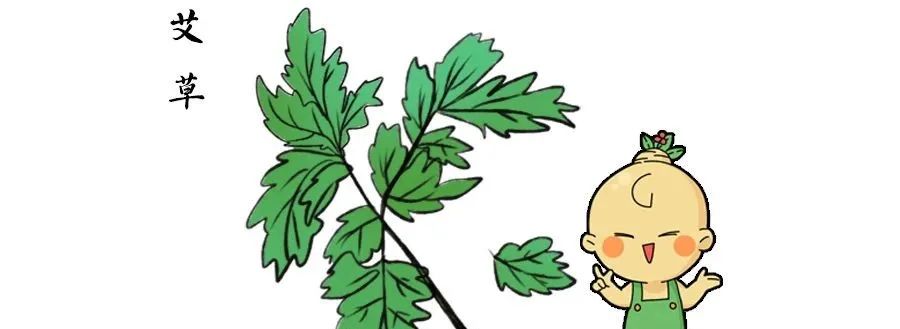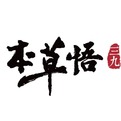As we welcome the last solar term of spring, Grain Rain (Gu Yu), the transition from spring to summer brings significant temperature changes, making it easy to catch a cold. Many people self-medicate when they catch a cold, but often they do not consider their symptoms and use whatever medication they have on hand. Sometimes this not only fails to help but can worsen the condition. Today, let’s discuss how to prevent common colds during the transition from spring to summer and how to adjust treatment according to symptoms.
Pay Special Attention to Wind-Heat Colds During the Transition from Spring to Summer
First, let’s look at the differences between wind-heat colds and wind-cold colds.
From the names, we can see that wind-cold colds and wind-heat colds are two different conditions.
Wind-cold colds are primarily caused by exposure to cold. Generally, there are two stages: the initial stage of cold exposure, where the cold pathogen invades the skin and lungs, leading to symptoms such as no sweating, chills, fear of wind, shivering, sneezing, and a runny nose with clear mucus; the second stage is the cold-heat phase, where the cold has penetrated deeper into the body, transforming into heat over time, resulting in fever and headache.
In contrast, wind-heat colds are mostly caused by significant temperature differences, leading to an imbalance of hot and cold in the body, allowing the wind-heat pathogen to invade. The main symptoms include high fever, slight fear of wind, headache, red and swollen throat, sticky yellow phlegm, and generally yellow nasal discharge. Additionally, if a wind-cold cold is not treated promptly, it may transform into a wind-heat cold.
●In Spring and Summer, Wind-Heat Colds are Common
Externally, during the transition from spring to summer, the wind still carries the sharpness of spring, combined with a sudden rise in temperature, leading to the simultaneous presence of wind and heat pathogens. “When the wind pathogen attacks, it first affects the lungs,” and the combined invasion of wind and heat can easily disrupt lung qi, triggering wind-heat colds.
Internally, in spring, the body’s yang energy rises, making it prone to internal heat. If there is internal heat evil in the body, it becomes easier to contract external pathogens, leading to wind-heat colds.

What Should Be Noted in Treating Wind-Heat Colds?
At this time, it is essential to determine whether you have a wind-heat cold based on your symptoms; otherwise, treatment may not only be ineffective but could also worsen the condition.
For wind-cold colds, some warming and dispersing herbs can be used to expel the cold; for wind-heat colds, the focus of treatment is to dispel wind and clear heat, using cooling and dispersing herbs to eliminate both wind and heat pathogens from the body and relieve exterior symptoms.
In addition to herbal remedies, acupuncture is used in TCM to disperse wind-heat, typically targeting points such as Hegu (合谷), Yiji (鱼际), and Waiguan (外关) on the hands, as well as Dazhui (大椎) at the back of the neck and Quchi (曲池) at the elbow. If there is throat swelling and pain, the point Shaoshang (少商) is often included. In more severe cases, bloodletting at certain points may be performed.
During acupuncture treatment, it is important to eat light and easily digestible foods. You can supplement with high-energy liquids or semi-liquids, such as congee, milk, soy milk, and vegetable or fruit juices. This helps replenish energy without burdening the digestive system. Fruits like starfruit and pears are recommended. It is crucial to avoid greasy, rich, and sweet foods to prevent exacerbating symptoms and slowing recovery.
If conditions allow, you can also try gua sha (scraping therapy) on the back to quickly reduce internal heat.
The specific method is to apply sesame oil to the area along the bladder meridian from the neck to the waist, then gently scrape downwards with a gua sha board. After scraping, drink plenty of warm water to help reduce fever. If there is significant internal heat, the scraped area may turn red, which is normal and not a cause for concern.

How to Prevent Wind-Heat Colds During the Transition from Spring to Summer?
●Prevent Internal Heat and Liver Fire
After Grain Rain, late spring cold becomes less common, and temperatures gradually rise. At this time, the liver and spleen work together, and the liver must smoothly transfer its power to the heart fire, which is a critical period. However, during this transitional phase, the spleen may be unstable, and liver fire can easily rise. Additionally, the body’s yang energy is accelerating, causing the heat stored in various organs to be released, leading to what is known as “spring fire.”
At this time, you can drink tea made from honeysuckle (Jin Yin Hua), chrysanthemum (Ju Hua), Luo Han Guo (Monk Fruit), and mint (Bo He). Honeysuckle disperses heat evil, chrysanthemum nourishes the liver and brightens the eyes, mint disperses wind-heat and relieves liver stagnation, and Luo Han Guo clears heat and moistens the lungs, making it suitable for those prone to throat swelling, oral ulcers, irritability, insomnia, anxiety, and dry eyes.
●Balance Yin and Yang, Enhance Immunity
TCM believes that “spring and summer nourish yang, autumn and winter nourish yin,” so it is essential to pay attention to nourishing yang energy in spring to enhance the body’s immunity.
To nourish yang energy, engage in outdoor activities, which can stimulate the body’s yang energy and allow you to absorb the yang energy of nature.
Additionally, soaking your feet before bed can relieve daily fatigue, promote blood circulation, accelerate metabolism, and improve sleep quality.
When soaking your feet, you can add some roasted licorice (Zhi Gan Cao) to the water to clear heat and relieve exterior symptoms, balance yin and yang, and strengthen the body’s immunity. If there is significant cold and dampness, you can also add a few slices of ginger to the water.


 Solving 3 Problems: Weight Loss and Muscle Gain Made Simple
Solving 3 Problems: Weight Loss and Muscle Gain Made Simple Expelling Cold and Dampness, Nourishing the Spleen and Stomach: This Food is Perfect for Qingming
Expelling Cold and Dampness, Nourishing the Spleen and Stomach: This Food is Perfect for Qingming Feeling Sleepy During the Day and Sleepless at Night? Use These 2 Tips to Alleviate Spring Fatigue.
Feeling Sleepy During the Day and Sleepless at Night? Use These 2 Tips to Alleviate Spring Fatigue.

